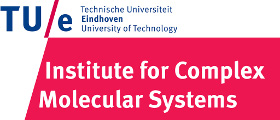Team:TU-Eindhoven/MRIProcessing
From 2013.igem.org



MRI Data Processing
Until recently, the most common way of generating MRI contrast was by using heavy metal based contrast agents. Examples of these substances are the commercial Gadolinium(III) based Magnevist and the Iron Oxide based Resovist. A very obvious downside of using heavy metals is the toxicity of the agents in the human body. Fortunately, a new type of MRI has been developed, which allows for the use of organic compounds as contrast agent.
The Principle
This new type of MRI goes by the name Chemical Exchange Saturation Transfer MRI or CEST MRI. The principle behind this technique is based on compounds that contain pools of exchangeable protons that can be selectively saturated using radiofrequency irradiation. Upon proton exchange with bulk water, these compounds can be indirectly visualized by measuring the bulk water. The amino acids lysine, arginine, threonine and serine contain those exchangeable protons and polypeptides containing those amino acids in abundance are therefore potential contrast agents. An other advantage of CEST MRI is that different kind of protons (e.g. amide and hydroxide protons) can be distinguished, which allows for 'multi-color' imaging using multiple contrast agents simultaneously.
To detect these protons in bulk water some processing steps are required. First of all, the imaging should be taken at different frequencies of the saturation pulse. This way the signal at different chemical shifts can be measured. When bulk water is set to 0 ppm, this plot will be roughly symmetric, since saturation pulses will excite the bulk water in a similar way when the absolute shift is equal. This also implies that when the signal at the left side of the bulk water shift is compared with the right side of the same plot, asymmetry can be detected. The CEST effect is exactly what causes these asymmetries in the signal plot, because the chemical shift of the CEST compounds lies at one side of the graph and is therefore not excited when a saturation pulse with the same shift from water, but on the other side of the graph is given.
References
 "
"



